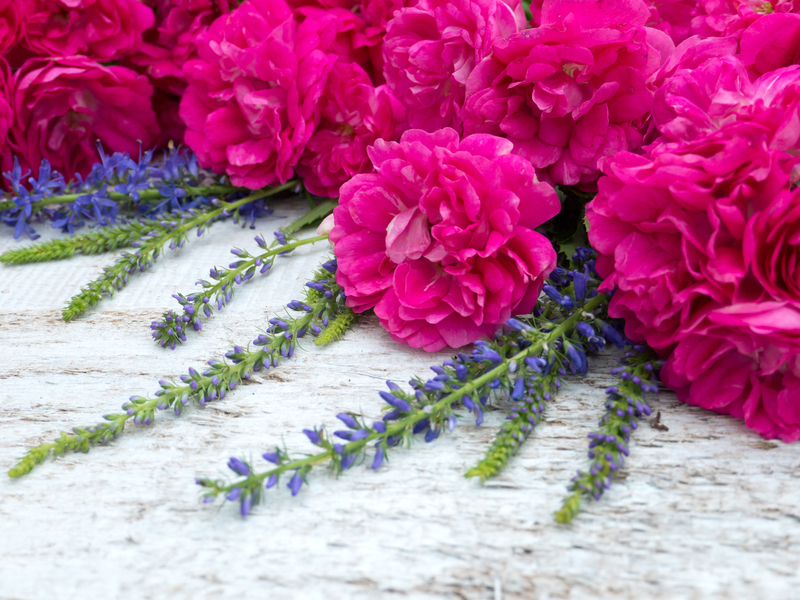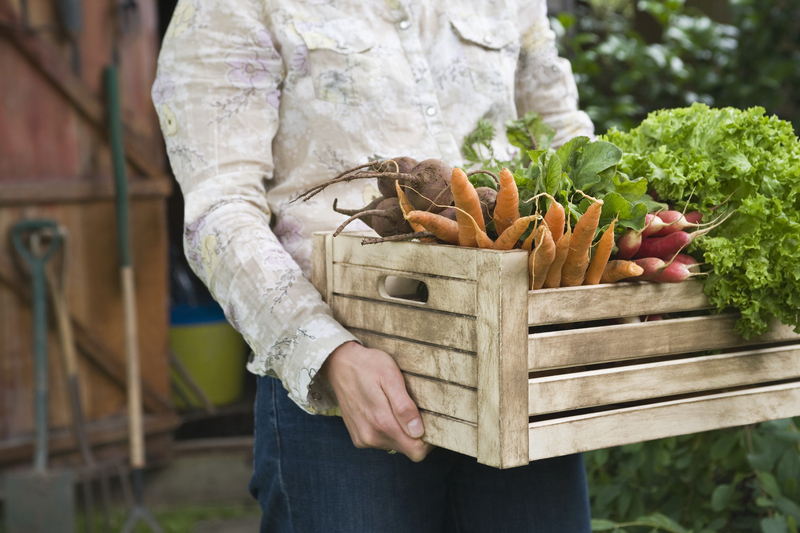Creating pet-friendly gardens with these expert tips
Posted on 27/05/2025
When it comes to shaping a pet-friendly garden, safety, style, and comfort must coexist. Our pets are not just companions--they are family members with unique needs and curious behaviors. Whether you have a playful dog, an inquisitive cat, or even smaller pets like rabbits or tortoises, designing a garden that accommodates their energy and safety can enhance everyone's outdoor experience. In this guide, we'll share comprehensive expert advice and creative strategies for crafting the perfect pet-safe outdoor space.
Why Choose a Pet-Friendly Outdoor Space?
Many garden enthusiasts worry about balancing a beautiful landscape with pet safety. The good news? With some thoughtful planning and the right plant selections, you can enjoy a lush, vibrant garden while giving your pets plenty of room to explore, relax, and have fun. In addition to boosting your home's appeal, pet-friendly gardens foster healthy exercise and mental stimulation for your four-legged friends.
Main Benefits of Pet-Friendly Landscaping
- Reduces toxic plant risks: A safe plant selection keeps pets from ingesting harmful foliage.
- Encourages safe exploration: Pets enjoy secure, enriched environments tailored for them.
- Protects garden features: Smart design minimizes damage from playful digging or chewing.
- Promotes overall wellbeing: Opportunities for exercise and play reduce anxiety and boredom in pets.

Initial Steps: Understanding Pet Behavior
Designing a garden for pets means thinking like your animal companions. Observe how your pet uses your current garden. Do they like to dig, chew, hide, or simply bask in the sun? Recognizing these patterns helps you plan paths, play zones, and hideaways in a way that satisfies their instincts without compromising your flower beds.
Assess Your Pet's Needs
- Dogs: Often love running paths, digging patches, and shaded lounging spots.
- Cats: Prefer climbing structures, secluded areas, and high perches for observation.
- Small pets (rabbits, tortoises): Need secure foraging zones and protection from predators.
Choosing Pet-Safe Plants and Materials
One of the most crucial steps in creating a pet-safe garden is researching which plants are toxic to animals. Common garden favorites like lilies, azaleas, and daffodils are highly poisonous. Instead, opt for non-toxic alternatives. It's also vital to choose safe mulches and fertilizers.
Pet-Safe Plant Options
- Roses: While they have thorns, roses pose no dangers if nibbled.
- Marigolds: Bright, cheerful, and generally safe for both dogs and cats.
- Sunflowers: These sturdy beauties are both safe and a rich source of bird activity for pets to watch.
- Snapdragons: Offer lush texture and safe blooms.
- Herbs: Pet-friendly choices include rosemary, basil, parsley, and thyme.
Avoid These Toxic Choices: Lilies, foxglove, oleander, sago palm, yew, and rhododendron. Even mulch can be a hazard: cocoa mulch, for example, is toxic to dogs due to theobromine content--use cedar or pine instead.
Selecting Safe Hardscaping Materials
- Flagstone or Brick: Durable and slip-resistant for energetic paws.
- Artificial Turf: Easy to clean and comfortable for dogs that love rolling.
- Pea Gravel: Gentle on paws and discourages digging.
Designing Play and Rest Zones
A successful pet-friendly yard features distinct zones for play, relaxation, and safe exploration. Use thick shrubs or trellises to create natural boundaries and prevent pets from wandering into sensitive plant areas. Raised beds and container gardens also help protect delicate flowers and edibles from playful paws.
Innovative Ideas for Interactive Spaces
- Dog agility courses: Use tunnels, ramps, and weave poles to engage energetic breeds.
- Shaded nooks: Provide cool spots with pergolas, large plants, or canvas sails for naps and rest.
- Cat patios ("catios"): Enclosed outdoor runs keep cats safe while letting them enjoy fresh air.
- Viewing platforms: Secure perches on walls or trees let cats observe their territory.
- Ponds and water features: Moving water fascinates many pets, but ensure these are shallow and safe.
Digging Solutions
Loveable diggers like terriers may not be stopped, but you can direct their digging instincts. Designate a sand or loose soil area where digging is encouraged, training your dog to use that spot with treats.
Pet-Friendly Garden Maintenance
Maintenance practices should always keep pet safety top of mind. Always use organic, non-toxic fertilizers and pest controls. Many commercial chemicals can harm both pets and wildlife in your garden ecosystem.
Organic Pest Control Solutions
- Neem oil: Effective against bugs, safe for pets if used per guidelines.
- Beneficial insects: Ladybugs, nematodes, and lacewings control pests naturally.
- Physical barriers: Netting, collars, or copper tape keep unwanted guests out without chemicals.
Avoid: Slug pellets, rodenticides, and lawn care products containing toxic substances. If you must use a treatment, restrict pet access until it's safe.
Creating a Secure and Comfortable Environment
Safety fencing is critical in a pet-proof garden. Make sure your boundaries are tall enough and without gaps. For diggers, consider burying chicken wire under the fence line. Use gates that latch securely to prevent escapes.
Pet Hydration and Weather Protection
- Water stations: Place bowls or pet fountains in shaded spots to ensure constant hydration.
- Shade: Large-leafed plants, canopies, or custom shelters prevent heatstroke and sunburn, especially in hotter climates.
- All-weather shelters: Outdoor pet houses or tents offer refuge during sudden rainstorms.
For colder months, provide straw-lined pet shelters and avoid water features that can freeze over and pose risks.
Landscaping Aesthetics and Pet Needs
You don't have to sacrifice beauty when designing a garden with pets in mind. Use layered planting and colorful, robust flowers. Ornamental grasses and sturdy shrubs form living fences, while raised containers add structure and prevent trampling. Choose plants that bloom at different times for year-round interest and avoid sharp-edged foliage that could injure playful pets.
Enrichment for Curious Pets
- Pet-friendly herbs: Catnip, valerian, and wheatgrass for cats; mint and parsley for dogs.
- Sensory elements: Scented plants, textured surfaces, and sound (chimes, moving water) stimulate your pet's senses.
- Interactive toys: Hide-and-seek balls or treat-dispensing puzzles can be dotted around safe play areas.
Dealing with Pet Waste in the Garden
Pet waste management is vital to prevent odors and keep your garden hygienic. Designate a specific spot for your dog's bathroom breaks, ideally with permeable ground like gravel or mulch for drainage. Train your pet to use that area consistently. Regularly collect waste and consider installing a pet waste composter--never use pet waste as fertilizer for edible crops.
Encouraging Coexistence with Wildlife
A thriving, animal-friendly garden supports both your pets and local wildlife. Use non-toxic habits and provide native plants to host birds and pollinators. However, ensure your garden boundaries protect vulnerable wildlife from overzealous pets, and avoid nightime hazards like pesticides or slug pellets that may harm hedgehogs or frogs.
Wildlife-Safe Garden Features
- Bird baths: Place high or behind mesh to discourage excited dogs or cats from disturbing birds.
- Wildlife corridors: Small gaps in fences allow hedgehogs to travel but are too small for pets to escape.
- Pond safety: Secure covers and gently sloping edges allow creatures to escape if they fall in.

Frequently Asked Questions About Pet-Safe Gardens
- What common plants should I avoid in a pet-friendly garden?
Lilies, daffodils, foxgloves, sago palm, and oleander are highly toxic. Always check the ASPCA or veterinary lists before planting anything new. - How can I stop my dog from digging up my flower beds?
Install low fencing or use raised beds. Provide a specific digging zone and reinforce positive digging behavior there with rewards. - Are there safe pesticides and fertilizers for pets?
Use organic treatments and always read labels. Look for OMRI-listed products, and restrict pet access until residues are gone. - How can I protect my vegetable patch from dogs and cats?
Use fencing, netting, or raised planters. Choose robust edibles and avoid using any chemicals that could harm pets. - Can I have a wildlife-friendly garden and still keep my pets safe?
Absolutely! Strategic fencing, pet-proof pond designs, and careful plant placement let wildlife and pets coexist harmoniously.
Conclusion: Grow a Garden Your Pets Will Love
Cultivating a pet-friendly garden takes thoughtful design, plant selection, and ongoing care, but the rewards are immense. By blending aesthetics with safety and providing enrichment for your pets, your outdoor space will become a haven for both people and animals. Let these expert tips for pet-friendly gardening inspire you to create a vibrant, harmonious landscape where everyone can thrive.
Ready to transform your backyard into a sanctuary? Start today and watch your pet-safe outdoor paradise flourish!



